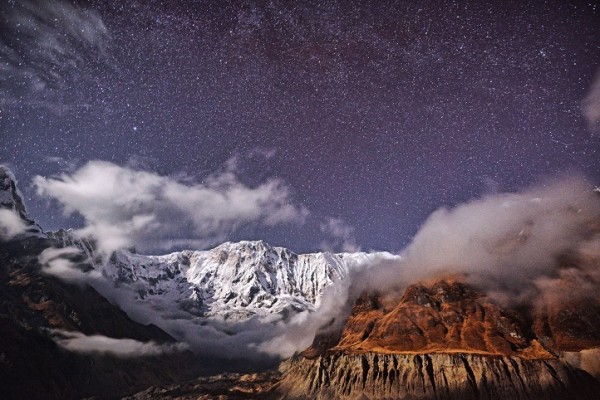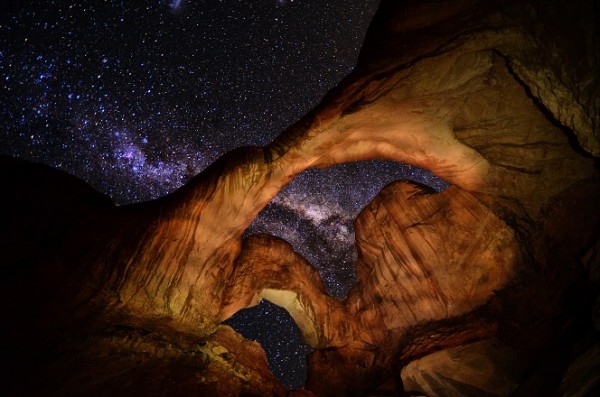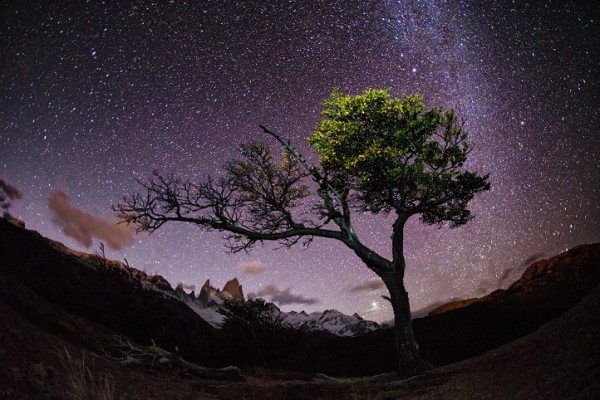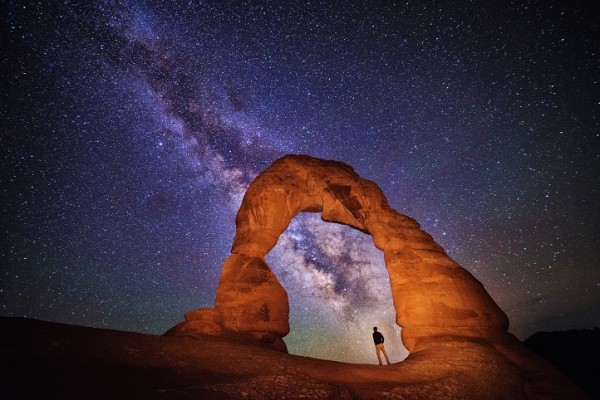AN HOUR AFTER SUNSET, most photographers are packing up their gear and heading to a nice hot meal and a warm bed, but not me. I’ve waited all day for the sun to dip over the horizon, and now it’s time to grab my camera bag and start hiking.
Typically, I will scout a location during the day, looking for unique angles, perspectives, and subjects to shoot, with a vision in mind of how it will look at night. I examine the subject: will I be able to illuminate it with a light (like a tree, for example) or is it too far away or too difficult to light, in which case it’ll remain completely black in the photo (for example, a distant canyon or desert tower)? Next, I think about how I’ll compose the photo during the dark of night. A composition that looks great in the sunlight isn’t necessarily one that works at night. Then, I think about how the lighting will affect the subject, where the Milky Way will be in relationship to the subject, at what angle the moon will appear (if at all that evening), where light pollution from nearby cities might show up in the photo, and countless other elements that don’t need to be accounted for in your standard daytime travel photography.






